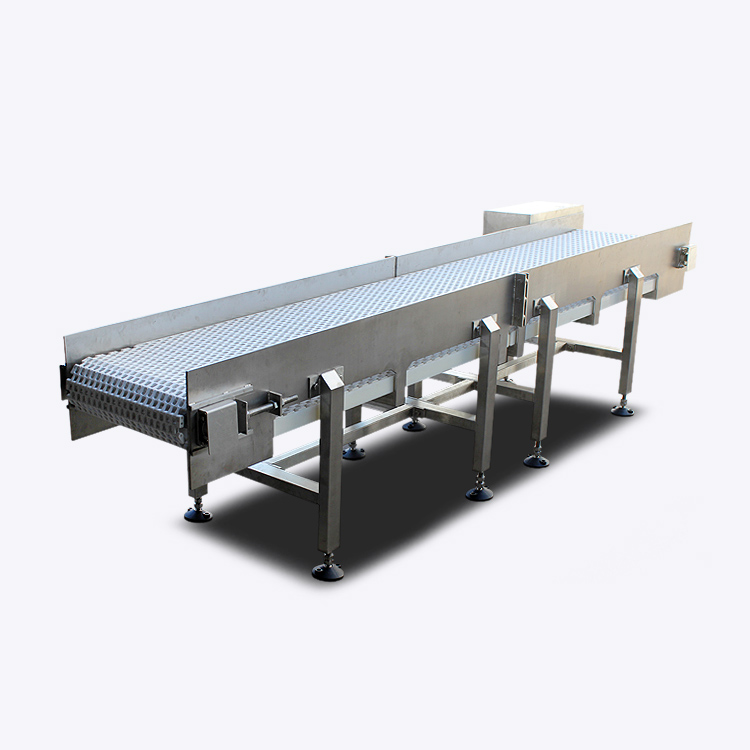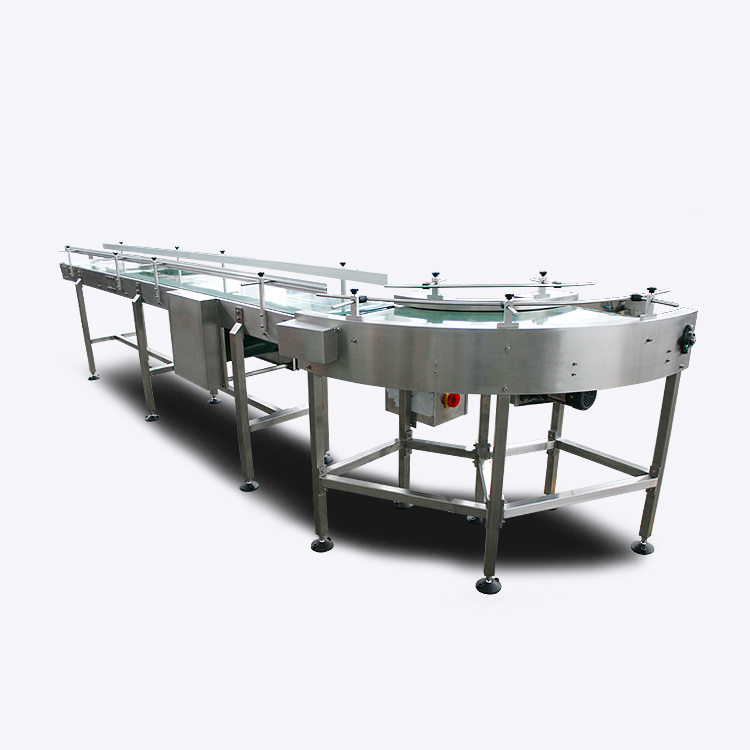Flat Belt Conveyors in Material Handling and Manufacturing
Flat belt conveyors are an essential tool in modern manufacturing and material handling, providing efficient and safe transportation of goods and materials. They work by using a continuous flat belt to move items from one place to another, with the belt supported by pulleys and rollers driven by motors.
The idea of conveyor systems dates back to the late 18th century, with the first recorded use of a conveyor belt in the early 19th century. Since then, conveyor technology has continued to evolve and improve, with flat belt conveyors becoming a popular choice in a variety of industries.
Improved safety: By reducing the need for manual labor, flat belt conveyors can also reduce the risk of worker injury or strain.
Lower operating costs and maintenance requirements: Flat belt conveyors have relatively low operating costs and require less maintenance compared to other conveyor types, such as chain or roller conveyors.
Versatility: Flat belt conveyors can handle a wide range of products and materials, making them a flexible option for many different industries.
Automotive: Flat belt conveyors are often used in the automotive industry for the assembly and transportation of components and finished products.
Agriculture: Flat belt conveyors are used for harvesting and sorting agricultural products such as fruits and vegetables.
Pharmaceutical: Flat belt conveyors are commonly used in the pharmaceutical industry for the production and packaging of medicines.
E-commerce and logistics: Flat belt conveyors are used for order fulfillment and distribution in the e-commerce and logistics industry.
Pulleys and rollers: These components support the belt and help to move it along the conveyor system. They are typically made from steel or plastic.
Motors and gearboxes: These provide the power needed to move the belt, with the motor connected to the gearbox and driving the pulleys and rollers.
Bearings and shafts: These components support and guide the belt as it moves along the conveyor system, helping to maintain proper tension and tracking.
Control systems: These regulate the speed and direction of the conveyor system, ensuring smooth and efficient operation.
Incline and decline belt conveyors: These types of conveyors are used for moving items up or down an incline, such as between different levels of a building or processing facility.
Curved belt conveyors: These use a curved section of conveyor belt to move items around corners or in a circular path.
Magnetic belt conveyors: These use magnets to move items along the conveyor belt, making them a good choice for transporting ferrous materials.
Timing belt conveyors: These use a toothed belt to move items at specific intervals, making them ideal for precision applications such as packaging and assembly.
Belt width and speed: The belt must be wide enough and move at the appropriate speed to accommodate the items being transported.
Incline and decline angle: If the conveyor is inclined or declined, the angle must be carefully considered to ensure safe and efficient operation.
Material and belt selection: The choice of belt material and construction must be appropriate for the items being transported and the environment in which the conveyor will be operating.
Drive and control system: The motor and control system must be appropriately sized and configured to provide efficient and reliable operation.
The idea of conveyor systems dates back to the late 18th century, with the first recorded use of a conveyor belt in the early 19th century. Since then, conveyor technology has continued to evolve and improve, with flat belt conveyors becoming a popular choice in a variety of industries.
Benefits of Flat Belt Conveyors
Increased efficiency and productivity: Flat belt conveyors can move large quantities of goods quickly and safely, reducing the need for manual labor and increasing overall productivity.Improved safety: By reducing the need for manual labor, flat belt conveyors can also reduce the risk of worker injury or strain.
Lower operating costs and maintenance requirements: Flat belt conveyors have relatively low operating costs and require less maintenance compared to other conveyor types, such as chain or roller conveyors.
Versatility: Flat belt conveyors can handle a wide range of products and materials, making them a flexible option for many different industries.
Top Applications for Flat Belt Conveyors
Food and beverage: Flat belt conveyors are commonly used in food processing and packaging for transporting products between different stages of production.Automotive: Flat belt conveyors are often used in the automotive industry for the assembly and transportation of components and finished products.
Agriculture: Flat belt conveyors are used for harvesting and sorting agricultural products such as fruits and vegetables.
Pharmaceutical: Flat belt conveyors are commonly used in the pharmaceutical industry for the production and packaging of medicines.
E-commerce and logistics: Flat belt conveyors are used for order fulfillment and distribution in the e-commerce and logistics industry.
Components of Flat Belt Conveyors
Conveyor belt: The belt is the main component of the conveyor system, made from materials such as PVC, rubber, or polyester. It moves along the pulleys and rollers to transport goods and materials.Pulleys and rollers: These components support the belt and help to move it along the conveyor system. They are typically made from steel or plastic.
Motors and gearboxes: These provide the power needed to move the belt, with the motor connected to the gearbox and driving the pulleys and rollers.
Bearings and shafts: These components support and guide the belt as it moves along the conveyor system, helping to maintain proper tension and tracking.
Control systems: These regulate the speed and direction of the conveyor system, ensuring smooth and efficient operation.
Types of Flat Belt Conveyors
Horizontal belt conveyors: These are the most common type of flat belt conveyor, used for straight-line transportation of goods and materials.Incline and decline belt conveyors: These types of conveyors are used for moving items up or down an incline, such as between different levels of a building or processing facility.
Curved belt conveyors: These use a curved section of conveyor belt to move items around corners or in a circular path.
Magnetic belt conveyors: These use magnets to move items along the conveyor belt, making them a good choice for transporting ferrous materials.
Timing belt conveyors: These use a toothed belt to move items at specific intervals, making them ideal for precision applications such as packaging and assembly.
Design Considerations for Flat Belt Conveyors
Load capacity: The conveyor must be able to handle the weight of the items being transported.Belt width and speed: The belt must be wide enough and move at the appropriate speed to accommodate the items being transported.
Incline and decline angle: If the conveyor is inclined or declined, the angle must be carefully considered to ensure safe and efficient operation.
Material and belt selection: The choice of belt material and construction must be appropriate for the items being transported and the environment in which the conveyor will be operating.
Drive and control system: The motor and control system must be appropriately sized and configured to provide efficient and reliable operation.





